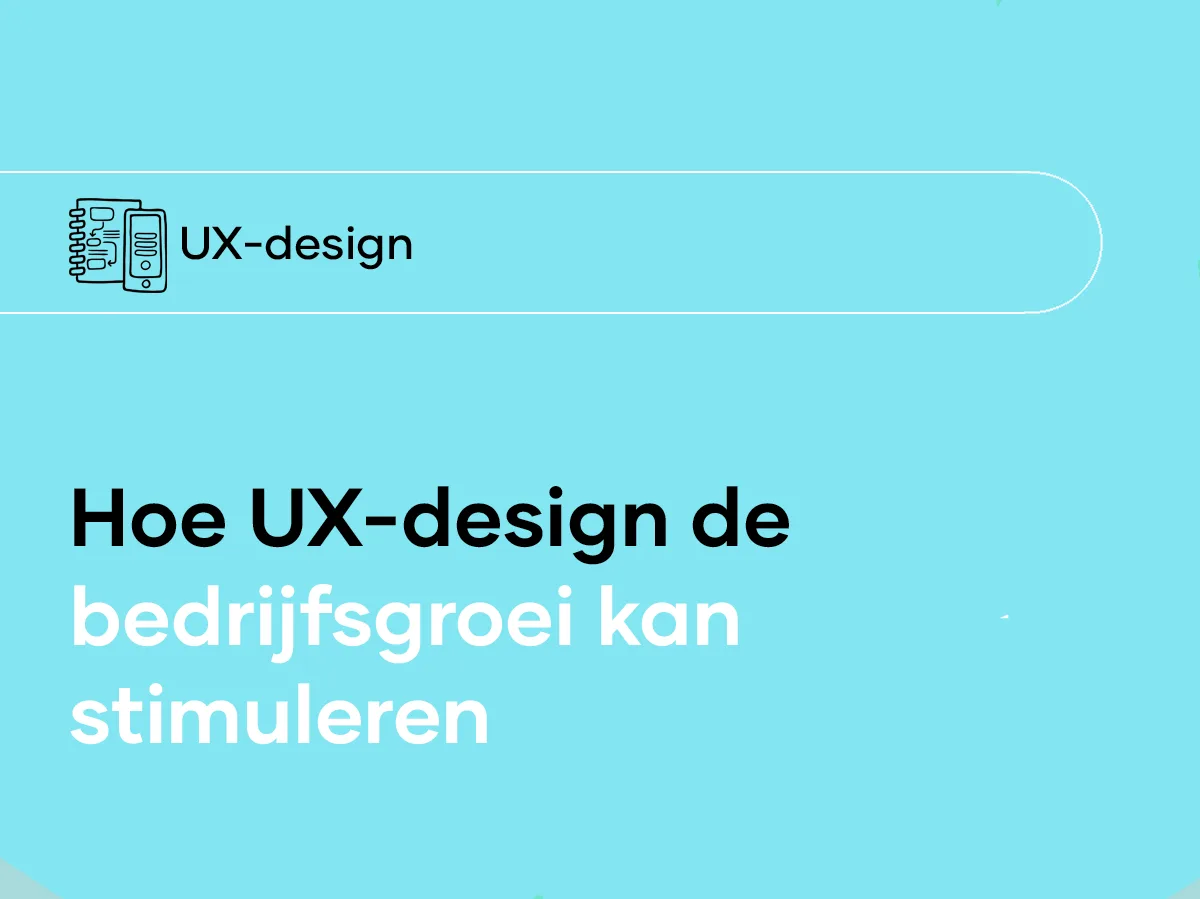Een effectievere benadering is om in de schoenen van de gebruiker te stappen, hun uitdagingen te begrijpen en deze vanuit hun perspectief aan te pakken. Dit elimineert vooroordelen en zorgt ervoor dat oplossingen worden ontwikkeld op basis van echte gebruikersbehoeften in plaats van persoonlijke aannames.
Deze gebruikersgerichte denkwijze vormt de kern van UX (User Experience) onderzoek en design. Door de ervaring van de eindgebruiker centraal te stellen, kunnen bedrijven producten en diensten creëren die écht aanspreken – en zo groei en duurzaam succes stimuleren.
Wat is UX-design?
UX (User Experience, in het Nederlands Gebruikerservaring) design richt zich op het vormgeven van de manier waarop gebruikers met een product omgaan, en zorgt voor een naadloze en intuïtieve ervaring. Het draait om ontwerpen met de eindgebruiker in gedachten – bepalen hoe een webdesign, app, apparaat of product eruit ziet, aanvoelt en functioneert.
Bedrijven erkennen de impact van UX en het wordt een essentieel onderdeel van het ontwerpproces. Prioriteit geven aan UX verbetert niet alleen de bruikbaarheid, maar verbetert ook de conversieratio’s en versterkt de merkrelatie met gebruikers.
Een creatieve benadering van UX
UX gaat niet alleen over data—het is een creatief proces dat zich aanpast aan de unieke behoeften van elk project.
Hoewel elke UX-reis anders is, blijft de basis hetzelfde: het begrijpen van de belangrijkste gebruikersgroepen en ervoor zorgen dat zij gemakkelijk toegang hebben tot de content die ze nodig hebben.
Om een ervaring te ontwerpen die echt resoneert, duiken we diep in jouw doelgroep—we verkennen hun motivaties, doelen, uitdagingen en zelfs angsten. Door gebruikersreizen en klantverhalen in kaart te brengen, ontdekken we verborgen behoeften, structureren we content op een doeltreffende manier en creëren we ervaringen die echt verbinden.
Van onderzoek tot UI-ontwerp
Zodra het onderzoek is voltooid -of dit nu via enquêtes, interviews, deskresearch of een combinatie van deze methoden is – is de volgende stap het structureren van de inhoud op een manier die logisch is voor de gebruiker. Dit is waar UI (User Interface, in het Nederlands gebruikersinterface) ontwerp in het spel komt.
UI-ontwerp is geen nieuw concept. Denk aan een auto – bepaalde functies zijn gestandaardiseerd voor veiligheid en gebruiksgemak. Op dezelfde manier, als de onderzoeksfase correct is uitgevoerd, zouden UI-beslissingen natuurlijk en intuïtief moeten aanvoelen, zonder onverwachte verrassingen.
Is je UX-proces op de juiste koers?
Als je niet met vertrouwen “ja” kunt antwoorden op de volgende vragen, kan je UX-proces hiaten bevatten:
- Heb je feedback verzameld van klanten over hun ervaringen met jouw producten of marketing?
- Heb je je doelgroepen in kaart gebracht en hun behoeften en uitdagingen geïdentificeerd?
- Is je oplossing ontworpen voor je gebruikers, of is het gebaseerd op persoonlijke aannames van wat werkt?
Als een van deze ontbreekt, is het tijd om je UX-aanpak opnieuw te beoordelen en te verfijnen.
Ontwerpen voor de gebruiker, niet voor onszelf
Een sterk UX-proces stelt ons ontwerpteam in staat om innovatieve, hoogpresterende oplossingen te creëren die de verwachtingen overtreffen. Maar het bereiken hiervan vereist eerlijkheid, objectiviteit en toewijding.
Het leidende principe? “Ik ben niet de eindgebruiker.” Doordat we ons richten op de gebruiker, zorgen we ervoor dat elke ontwerpbeslissing gebaseerd is op echte behoeften, en niet op persoonlijke aannames.

